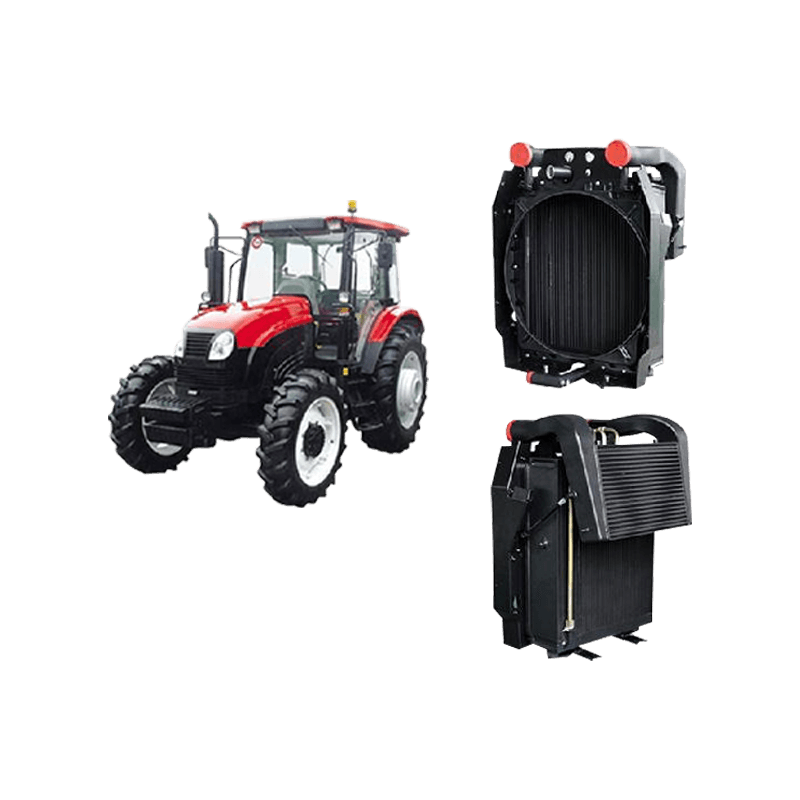 +86-13812067828
+86-13812067828
When it comes to maintaining the performance and longevity of agricultural machinery, effective heat dissipation is critical. The fin type agricultural machinery heat exchanger plays a pivotal role in ensuring engines and hydraulic systems operate within safe temperature ranges. At the heart of this technology lies the science of fin geometry, a factor that significantly impacts heat transfer efficiency. Understanding how fin design influences cooling performance allows manufacturers and users alike to appreciate the value of advanced heat exchanger solutions tailored specifically for tough agricultural environments.
The fundamental purpose of fins in these heat exchangers is to increase the surface area available for heat exchange between the hot fluid inside and the surrounding air. Aluminum fins, commonly used due to their excellent thermal conductivity and lightweight nature, are carefully shaped and spaced to maximize airflow and enhance convective heat transfer. The shape of the fins — whether straight, louvered, or wavy — directly affects how air moves across the surface, influencing how quickly heat dissipates. For example, louvered fins create turbulence in the airflow, which breaks the boundary layer of still air that naturally forms on surfaces and improves cooling efficiency in heavy-duty agricultural applications.
Another important aspect of fin geometry is fin density, or the number of fins per inch. A higher fin density increases the surface area but can also restrict airflow if fins are too closely spaced, causing a trade-off between surface contact and air resistance. Optimizing fin spacing is crucial, especially for machinery operating in dusty or debris-filled fields where clogging can reduce effectiveness. A well-engineered fin type agricultural heat exchanger balances these factors, ensuring rapid cooling without compromising durability or maintenance needs.

Material selection complements fin design by enhancing thermal conductivity and corrosion resistance, vital in harsh agricultural settings. The choice of aluminum alloys and sometimes specialized coatings protects the fins from corrosion caused by moisture, fertilizers, and soil particles, ensuring long-term reliability. This durability means that the fin-type heat exchanger not only cools efficiently but also withstands the mechanical stresses and environmental challenges faced by tractors, harvesters, and irrigation systems.
From a practical perspective, the compactness and lightweight nature of fin-type heat exchangers allow easy integration into various agricultural machinery without adding excessive weight or complexity. This adaptability makes it a favored choice for manufacturers focused on delivering both performance and cost-effectiveness. By maintaining optimal engine temperatures, these heat exchangers contribute to improved fuel efficiency and reduced wear on components, ultimately lowering operating costs for farmers and equipment operators.
At our manufacturing facility, we emphasize precision engineering of fin geometries that meet rigorous industry standards. Our fin type agricultural machinery heat exchangers are designed with an in-depth understanding of fluid dynamics and thermal science, providing customers with proven solutions that stand up to the toughest farming conditions. This commitment ensures that every unit delivers reliable performance, helping agricultural professionals achieve higher productivity with minimal downtime.
In conclusion, the efficiency of a fin type agricultural machinery heat exchanger is not just about having fins but about how those fins are expertly designed and implemented. By carefully optimizing fin shape, spacing, and materials, manufacturers can significantly enhance heat transfer capabilities, ensuring agricultural machinery runs cooler, longer, and more efficiently. This technical expertise transforms a simple component into a critical contributor to the overall success of modern farming operations.